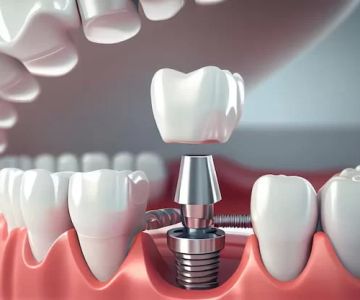- Overview of Root Canal Treatment
- Pain During Root Canal Treatment: What to Expect
- Post-Treatment Care and Pain Management
- Common Myths and Facts About Root Canal Treatment
- Alternatives to Root Canal Treatment
1. Overview of Root Canal Treatment
Root canal treatment is a dental procedure that’s performed when the pulp of a tooth becomes infected or inflamed. The procedure involves removing the infected pulp, cleaning the inside of the tooth, and sealing it to prevent further infection. While root canal therapy has earned a reputation for being painful, advancements in dental technology and anesthesia have made it a much more comfortable experience for patients. But the big question remains: is root canal treatment really painful?
1.1. Why Is Root Canal Treatment Necessary?
A root canal becomes necessary when the pulp inside a tooth becomes infected or decayed, typically due to deep cavities, cracks, or trauma. Left untreated, an infected tooth can lead to abscesses, bone loss, and severe pain. Root canal therapy helps save the tooth and restore it to full function, preventing the need for extraction.
1.2. How Is Root Canal Treatment Done?
During a root canal procedure, the dentist or endodontist first numbs the area with a local anesthetic. Then, they create a small opening in the tooth to remove the infected pulp. The inside of the tooth is thoroughly cleaned, shaped, and sealed. In some cases, a crown may be placed on top of the tooth for additional protection.
2. Pain During Root Canal Treatment: What to Expect
Many people fear that a root canal will be unbearably painful, but the reality is much different. Thanks to modern anesthesia and pain management techniques, most patients experience little to no pain during the procedure.
2.1. Local Anesthesia and Its Role
Before starting the treatment, the dentist will administer a local anesthetic to numb the area around the affected tooth. This ensures that you won’t feel any pain during the procedure. The anesthetic typically lasts throughout the duration of the treatment, so you’ll remain comfortable.
2.2. Discomfort During and After the Procedure
While root canal treatment itself is generally painless, some patients may experience mild discomfort during the procedure, such as pressure or a slight sensation of vibration. However, this is not the same as pain. After the procedure, it’s common to feel some soreness or tenderness in the treated area, but this typically subsides within a few days.
2.3. How to Minimize Pain During the Procedure
If you have dental anxiety or concerns about pain, talk to your dentist about your options. Sedation dentistry can help you relax during the procedure, and your dentist may suggest additional pain management options, such as taking anti-inflammatory medications before and after the treatment.
3. Post-Treatment Care and Pain Management
After the root canal procedure, your dentist will provide you with instructions on how to care for your tooth and manage any discomfort. Proper post-treatment care is essential to avoid complications and ensure a smooth recovery.
3.1. Managing Discomfort After the Procedure
It’s normal to experience some soreness after the procedure. Over-the-counter pain medications, such as ibuprofen, can help alleviate any discomfort. Your dentist may also recommend cold compresses to reduce swelling in the treated area.
3.2. Avoid Hard Foods
For the first few days after the root canal, it’s important to avoid chewing hard or sticky foods on the treated side of your mouth. This allows the tooth to heal properly and minimizes the risk of any damage to the filling or temporary crown.
3.3. Follow-up Appointments
After your root canal treatment, you’ll typically need a follow-up appointment to ensure that the tooth is healing properly. If your dentist placed a temporary filling or crown, they will replace it with a permanent restoration during this visit.
4. Common Myths and Facts About Root Canal Treatment
There are many misconceptions about root canal treatments, some of which cause unnecessary fear. Here are some common myths, along with the facts:
4.1. Myth: Root Canal Treatment Is Extremely Painful
Fact: Thanks to modern dental techniques and anesthesia, root canal treatments are generally no more painful than having a regular filling placed. The pain people associate with root canals often comes from the infection itself, not the procedure.
4.2. Myth: Root Canal Treatment Takes a Long Time
Fact: In most cases, root canal treatments can be completed in one to two appointments, with each session lasting around 30 to 90 minutes depending on the complexity of the case.
4.3. Myth: Root Canal Treatment Causes Illness
Fact: Root canal treatments are safe and do not cause illness. The procedure is performed to save the tooth and prevent infection from spreading, improving your overall health in the process.
5. Alternatives to Root Canal Treatment
While root canal treatment is often the best option to save a damaged or infected tooth, there are alternatives for patients who may not be suitable candidates for the procedure.
5.1. Tooth Extraction
If a root canal isn’t an option, tooth extraction may be necessary to prevent the spread of infection. Once the tooth is removed, your dentist may suggest replacing it with a dental implant, bridge, or partial denture.
5.2. Pulp Capping
In some cases, especially if the infection is caught early, a less invasive procedure called pulp capping may be recommended. This involves sealing the pulp to prevent further damage, though it’s typically only suitable for younger teeth with minimal infection.
If you’re still wondering about root canal treatment and its pain levels, or if you need to schedule a consultation, visit Dentistry Toothtruth for more information and personalized care options.







 Dr. George Diaz, DDS5.0 (91 review)
Dr. George Diaz, DDS5.0 (91 review) Flanders Pediatric Dentistry4.0 (210 review)
Flanders Pediatric Dentistry4.0 (210 review) New Horizons Family Dental4.0 (114 review)
New Horizons Family Dental4.0 (114 review) Kirk Family Dentistry4.0 (487 review)
Kirk Family Dentistry4.0 (487 review) Western Dental & Orthodontics3.0 (328 review)
Western Dental & Orthodontics3.0 (328 review) Monarch Dental & Orthodontics4.0 (557 review)
Monarch Dental & Orthodontics4.0 (557 review) The Importance of Oral Health Education During Pregnancy for a Healthy Pregnancy
The Importance of Oral Health Education During Pregnancy for a Healthy Pregnancy Best Tips for Brushing Your Teeth Properly for Healthy Gums: Essential Techniques for Oral Health
Best Tips for Brushing Your Teeth Properly for Healthy Gums: Essential Techniques for Oral Health Why Skipping Dental Checkups Can Lead to Bigger Oral Health Problems
Why Skipping Dental Checkups Can Lead to Bigger Oral Health Problems Advantages of Porcelain Dental Restorations
Advantages of Porcelain Dental Restorations How Can Diabetes Cause Tooth and Gum Problems? Preventing and Managing Oral Health Issues
How Can Diabetes Cause Tooth and Gum Problems? Preventing and Managing Oral Health Issues Healthy Habits for Promoting Good Oral Health and Hygiene: Tips for a Healthy Smile
Healthy Habits for Promoting Good Oral Health and Hygiene: Tips for a Healthy Smile